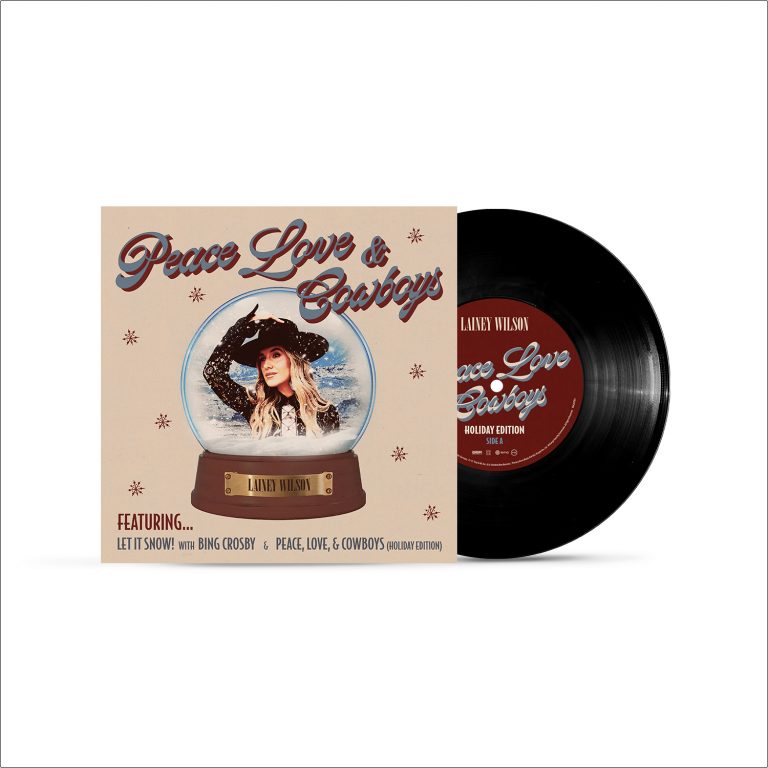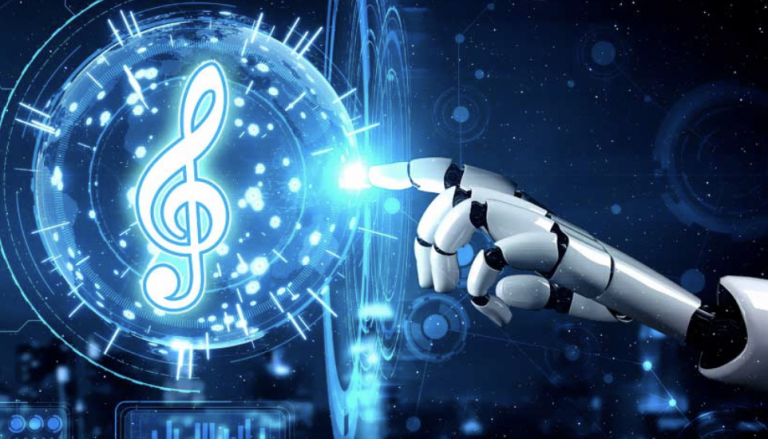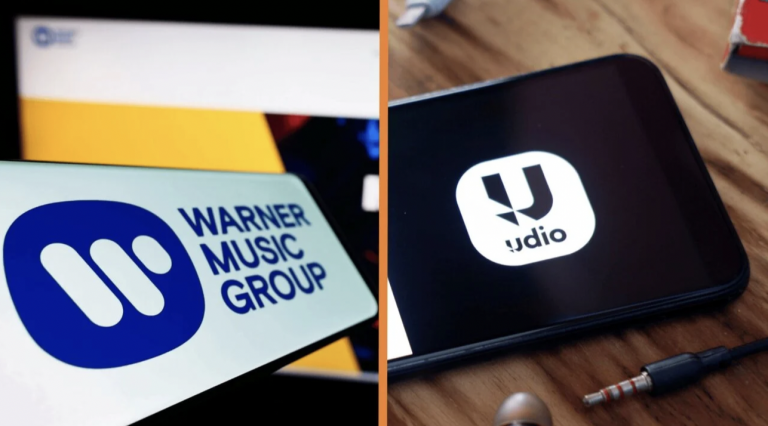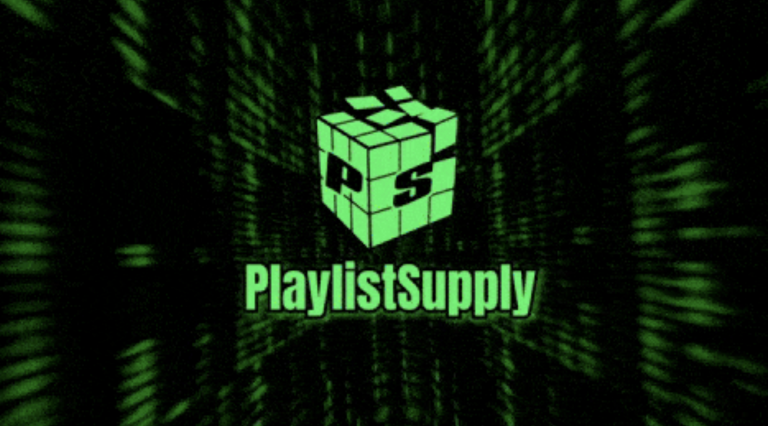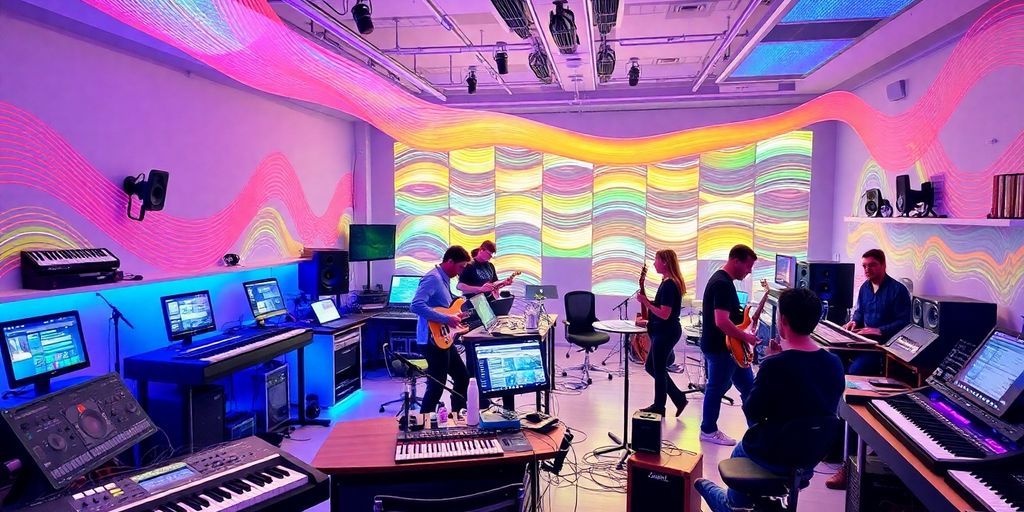
Music laboratories are at the forefront of innovation in sound and music research. These spaces not only explore how we perceive sound but also how technology can transform music creation. From engaging young musicians to collaborating with artists, music laboratories are shaping the future of music and sound experiences. In this article, we will take a closer look at the innovative approaches, technological advancements, and the unique challenges faced by these labs.
Key Takeaways
- Music laboratories combine science and creativity to enhance sound experiences.
- Technology plays a crucial role in modern music production and design.
- Educational programs in music labs help nurture the next generation of musicians.
- Collaboration between artists and researchers leads to groundbreaking projects.
- Sustainability and personalization are key trends shaping the future of music laboratories.
Innovative Approaches In Music Laboratory Research

Exploring Sound Perception
Sound perception is a big deal in music labs. It’s not just about hearing; it’s about how we hear and what we do with that information. Labs are using some cool methods to figure this out. For example, they might use virtual reality to create different acoustic environments and see how people react. Or, they might use brain scans to see which parts of the brain light up when people hear certain sounds. It’s all about understanding the nuances of how we experience sound.
- Using VR to simulate different concert halls.
- Analyzing brain activity with EEG during music listening.
- Developing new hearing tests to detect subtle differences in sound perception.
The Role of Technology in Music Creation
Technology is changing music creation. Labs are at the forefront, developing new tools and techniques. Think about it: software that can compose music based on your mood, or instruments that respond to your body movements. It’s a wild time to be a musician. This experimental approach keeps music production at the cutting edge.
Music labs are exploring AI-driven composition tools, motion-capture instruments, and interactive sound installations. These technologies are not just tools; they’re collaborators, pushing the boundaries of what’s musically possible.
Collaborative Projects with Artists
Music labs aren’t just for scientists; they’re also for artists. Many labs actively seek out collaborations with musicians, composers, and sound designers. These partnerships can lead to some really interesting results. Imagine a composer working with a neuroscientist to create music that’s designed to affect your brain in a certain way. Or a sound designer working with an engineer to create a new type of instrument. The possibilities are endless. Here’s a simple breakdown of a typical collaboration:
| Stage | Description |
|---|---|
| Ideation | Artists and researchers brainstorm ideas. |
| Experimentation | Labs provide resources for artists to experiment. |
| Analysis | Researchers analyze the results of the experiments. |
| Presentation | The collaboration culminates in a performance or installation. |
The Intersection of Science and Music
It’s pretty wild when you stop and think about it: music, something so deeply emotional and artistic, can be studied with the same tools and methods we use for, like, physics or biology. The intersection of science and music is where we start to understand not just what music is, but how it affects us on a fundamental level. It’s not just about taste; it’s about how our brains are wired.
Understanding Auditory Processing
Auditory processing is how our brains take raw sound and turn it into something meaningful. Think about it: your ear picks up vibrations, but your brain interprets those vibrations as a melody, a rhythm, or a voice. Scientists are using things like EEG and fMRI to see exactly which parts of the brain light up when we hear different kinds of music. This helps us understand how we perceive pitch, timbre, and rhythm, and how those elements combine to create the overall musical experience. It’s not just about identifying notes; it’s about how our brains construct a cohesive soundscape. streaming platforms have changed how we access these sounds.
Music’s Impact on Cognitive Function
Music isn’t just something nice to listen to; it can actually change how our brains work. Studies have shown that music can improve memory, focus, and even problem-solving skills. For example, learning to play an instrument can boost cognitive development in kids, and listening to certain types of music can help adults concentrate while they work. It’s like a workout for your brain. But it’s not a one-size-fits-all thing. What helps one person focus might distract another. It’s all about finding what works for you.
Neuroscience of Musical Creativity
Where does musical creativity come from? That’s a question scientists and musicians have been asking for ages. Neuroimaging studies are starting to give us some answers. They’re finding that when musicians improvise or compose, certain brain regions associated with creativity and emotion become more active, while others that usually control self-monitoring become less active. It’s like the brain is letting go of its inhibitions and allowing new ideas to flow. It’s a complex process, and we’re only just beginning to scratch the surface, but it’s fascinating to see how science can shed light on the creative process. The blend of science and artistry is truly amazing.
It’s important to remember that while science can give us insights into how music affects us, it can’t fully explain the subjective experience of music. There’s still a lot of mystery and magic involved, and that’s part of what makes music so special.
Creative Workshops and Educational Programs
Engaging Young Musicians
Music laboratories are increasingly focusing on programs designed to spark interest in young musicians. These workshops often use interactive technology to make learning fun and accessible. It’s not just about scales and sheet music anymore; it’s about exploring sound in a way that resonates with kids today. For example, some labs are using coding to teach kids how to create their own digital instruments. It’s pretty cool to see them light up when they realize they can make music with just a few lines of code.
- Hands-on instrument building
- Digital music creation software tutorials
- Collaborative songwriting projects
I remember when I was a kid, music lessons felt like a chore. But these new programs? They’re changing the game. Kids are actually excited to learn, and that’s what it’s all about.
Professional Development for Educators
It’s not just the kids who need to learn new tricks; educators do too! Music labs are stepping up to support alumni by providing professional development opportunities for teachers. These programs help educators integrate new technologies and teaching methods into their classrooms. It’s about giving them the tools they need to inspire the next generation of musicians.
- Workshops on using music software in the classroom
- Training on incorporating improvisation into lessons
- Strategies for teaching diverse musical styles
Community Outreach Initiatives
Music labs aren’t just for students and professionals; they’re also reaching out to the wider community. These outreach initiatives aim to bring music to people who might not otherwise have access to it. Think about it: free concerts, workshops in underserved neighborhoods, and partnerships with local organizations. It’s all about sharing the joy of music with everyone. The NYU Music Experience Design Lab (MusEDLab) has locations in Brooklyn and Shanghai, actively seeking collaborators and partners in the US, Europe, and Asia.
Here’s a simple breakdown of a typical outreach program:
| Activity | Description | Target Audience |
|---|---|---|
| Free Concerts | Performances in public spaces, showcasing local talent. | General Public |
| School Workshops | Interactive sessions in schools, introducing kids to different instruments. | Elementary/Middle School |
| Senior Center Jams | Music-making sessions for seniors, promoting social interaction. | Senior Citizens |
Technological Advancements in Music Production
Interactive Sound Design Tools
Okay, so things are getting wild with sound design. Remember when you needed a whole studio to mess with audio? Now, it’s all about these interactive tools. You can tweak sounds in real-time, almost like sculpting with audio. It’s not just about presets anymore; it’s about creating something totally unique. These tools have made music production more accessible and experimental.
Virtual Reality in Music Experiences
VR isn’t just for gaming anymore. Imagine being inside the music. That’s what VR is bringing to the table. You could be on stage with your favorite band, or in a totally abstract world that reacts to the music. It’s a whole new level of immersion. It’s still early days, but the potential is huge. Think about live shows, music videos, even just listening at home. It’s going to change how we experience music, no doubt.
Adaptive Music Technologies
This is where things get really interesting. Adaptive music is music that changes based on what’s happening around it. Think about a video game where the soundtrack shifts depending on your actions, or music that adjusts to your mood. It’s all about creating a personalized listening experience.
The continuous evolution of production technology keeps music production at the cutting edge. This experimental approach is creating new tools, genres, and possibilities.
Here are some ways adaptive music is being used:
- Video games: Dynamic soundtracks that react to gameplay.
- Fitness apps: Music that adjusts to your workout intensity.
- Therapy: Personalized soundscapes for relaxation and focus.
The Future of Music Laboratories
Personalized Acoustic Environments
Imagine a future where the lab adapts to your ears. We’re talking about spaces that morph their soundscapes based on individual preferences and the task at hand. Need to focus? The room adjusts to minimize distractions. Brainstorming? It shifts to encourage collaboration. This isn’t science fiction; it’s where audio technology is headed.
Sustainable Practices in Music Production
Music production can be surprisingly wasteful. Think of all the discarded equipment, the energy consumed by studios, and the environmental impact of shipping instruments. The future demands a greener approach. This means:
- Using recycled materials in instrument construction.
- Developing energy-efficient recording technologies.
- Promoting digital distribution to reduce physical waste.
Labs are starting to explore ways to minimize their carbon footprint, from using solar power to composting food waste. It’s about making music responsibly.
Global Collaborations and Innovations
The best ideas often come from unexpected places. Music labs are increasingly connecting across borders, sharing knowledge, and working together on projects. This global network fosters innovation and allows researchers to tackle complex challenges from diverse perspectives. Think of it as a worldwide jam session for scientists and artists. The NYU Music Experience Design Lab has locations in Brooklyn and Shanghai, actively seeking collaborators and partners in the US, Europe, and Asia.
Case Studies from Leading Music Laboratories
Success Stories from NYU MusEDLab
NYU’s MusEDLab is doing some cool stuff, especially with how kids learn music. They’ve had some real wins in figuring out how to make music education more engaging. One of their big successes is developing interactive software that adapts to each student’s learning style. It’s not just about hitting the right notes; it’s about understanding the music. They’ve seen improvements in student motivation and performance.
- Improved student engagement by 40%.
- Increased test scores by 25%.
- Positive feedback from teachers and students.
The MusEDLab’s approach is all about personalized learning. They use data to understand how each student learns best and then tailor the music lessons accordingly. It’s a game-changer for music education.
Research Findings from UCSF Sound Lab
The UCSF Sound Lab is diving deep into how sound affects our brains. They’re looking at everything from how we perceive music to how sound can be used to treat neurological disorders. One of their key findings is that certain types of music can actually reduce anxiety and improve mood. They’re using brain imaging techniques to see what’s happening in the brain when we listen to music.
- Music therapy reduces anxiety by 30% in patients.
- Specific sound frequencies can alleviate symptoms of tinnitus.
- Personalized soundscapes improve sleep quality.
Innovations at the MIT Media Lab
The MIT Media Lab is always pushing the boundaries of what’s possible with technology and music. They’re working on some wild stuff, like creating instruments that can be played with your mind and developing new ways to experience music in virtual reality. Their work is all about exploring the future of sound and how it can enhance our lives. They’ve created some pretty mind-blowing prototypes that could change the way we create and consume music.
- Development of brain-computer interfaces for musical expression.
- Creation of immersive VR music experiences.
- Exploration of AI-driven music composition tools.
Challenges and Opportunities in Music Research

Funding and Resource Allocation
Getting money for music research can be tough. It’s not always seen as important as, say, medical research. This means labs often have to get creative with funding. It’s a constant hustle to find grants, partnerships, and other ways to keep the lights on and the equipment running. It’s not just about the money, either. It’s about having the right tools and people. Labs need access to things like high-quality recording equipment, software, and, of course, talented researchers.
- Applying for grants from various organizations.
- Seeking partnerships with tech companies.
- Developing innovative funding models.
Securing consistent funding is a major hurdle. It requires demonstrating the real-world impact of music research, not just its artistic value.
Ethical Considerations in Music Studies
When you’re studying music, you’re often dealing with people’s emotions and personal experiences. That means you have to be super careful about ethics. You can’t just blast music at people and see what happens. You need to think about things like informed consent, privacy, and the potential for emotional distress. For example, if you’re studying how music affects people with anxiety, you need to make sure you’re not making their anxiety worse. It’s a tricky balance, but it’s important to get it right. The application of AI in music also brings up new questions about copyright and ownership.
Balancing Creativity and Scientific Rigor
Music is art, but music research is science. The challenge is finding a way to combine those two things. You want to be creative and explore new ideas, but you also need to be rigorous and use scientific methods. It’s easy to get carried away with the artistic side and forget about the science, or vice versa. The best music research finds a way to blend both. It’s about using science to understand the magic of music, and using music to inspire new scientific discoveries. It’s about finding that sweet spot where creativity and rigor meet.
Here’s a simple breakdown:
| Aspect | Creativity | Scientific Rigor |
|---|---|---|
| Focus | Exploration, innovation, artistic expression | Data, analysis, methodology, reproducibility |
| Approach | Open-ended, intuitive | Structured, controlled, evidence-based |
| Potential Pitfalls | Lack of objectivity, subjective bias | Stifled innovation, limited scope |
Looking Ahead in Sound Innovation
As we wrap up our journey through the innovative music lab, it’s clear that the future of sound is bright and full of possibilities. This lab is not just about making music; it’s about pushing boundaries and exploring new ways to connect with sound. With every experiment and new technology, they’re shaping how we think about music and its role in our lives. It’s exciting to think about what’s next. Whether it’s new tools for creators or fresh ways to experience sound, the lab is at the forefront of it all. So, keep an ear out—there’s a lot more to come from this space where creativity and technology meet.
Frequently Asked Questions
What is a music laboratory?
A music laboratory is a place where people study and create music using different tools and technology. It’s like a science lab, but for sound!
How does technology help in music creation?
Technology helps musicians by providing new ways to make music, like using special software and devices to create different sounds and effects.
Can anyone participate in workshops at music labs?
Yes! Many music labs offer workshops for people of all ages and skill levels, so anyone interested in music can join and learn.
What kind of research is done in music laboratories?
Researchers in music labs study how we hear music, how it affects our brains, and how to make music more enjoyable for everyone.
Are there any famous music labs?
Yes, some well-known music labs include the NYU Music Experience Design Lab and the UCSF Sound and Music Perception Lab, where they do exciting research.
What challenges do music researchers face?
Music researchers often deal with challenges like finding enough money for their projects and making sure their studies are done ethically.


